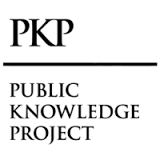The protection of personal data of children and adolescents
DOI:
https://doi.org/10.14295/juris.v33i2.16562Keywords:
LGPD, ANPD, personal data, consent, children, teenagersAbstract
The General Personal Data Protection Law (LGPD) is considered an umbrella law, as it is a standard that only proposes to present general rules related to the protection of personal data. This regulation provided that a specific authority would be in charge of drafting protection and privacy guidelines corresponding to personal data, with the responsibility also to draft regulations, monitor compliance with the law and apply penalties, including pecuniary penalties. Thus, the National Personal Data Protection Agency (ANPD) was created. Article 31, § 5, of the Access to Information Law (LAI) provided that specific legislation would provide for procedures for processing personal information, with Law No. 13,709, of August 14, 2018, General Protection Law having been enacted. of Personal Data (LGPD). The LGPD follows international movements related to the topic, notably the European General Data Protection Regulation (GPDR). The research question was: what is the ANPD's current understanding of the legal hypotheses related to the processing of children and adolescents' data? The general objective is to analyze the issue of protecting personal data related to children and adolescents. The following specific objectives were defined: a) analyze the doctrinal divergence regarding the processing of data from children and adolescents; b) analyze the CD/ANPD STATEMENT No. 1, of May 22, 2023. The statement, in force since its publication, which occurred on May 24, 2023, presents the legal hypotheses relating to the processing of data from children and adolescents, defining that for these holders the provisions contained in Article 7 or Article 11 of the LGPD apply, in accordance with Article 14 of the Law. Therefore, the ANPD does not define consent for the processing of personal data as a single rule. children and adolescents, removing divergence on this issue.
Downloads
Downloads
Published
How to Cite
Issue
Section
License

This work is licensed under a Creative Commons Attribution 3.0 Unported License.
Ao encaminhar os originais, o(s) autor(es) cede(m) os direitos de publicação para a JURIS.







